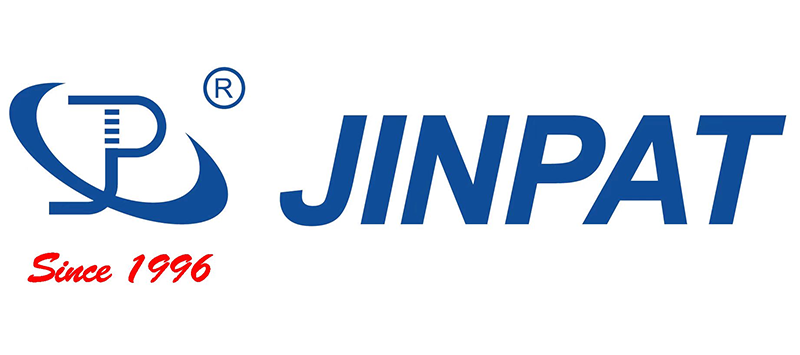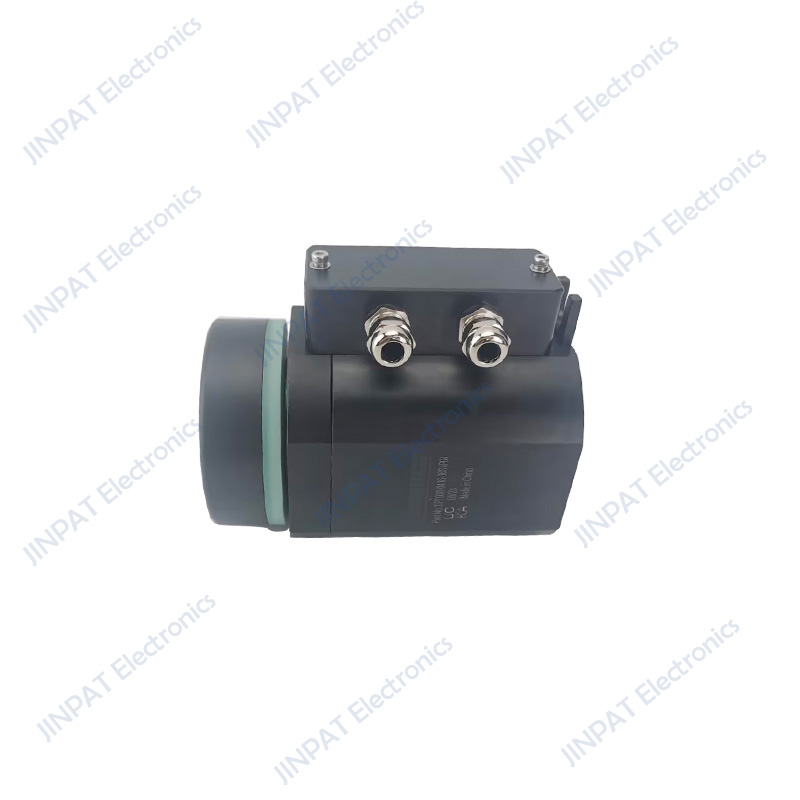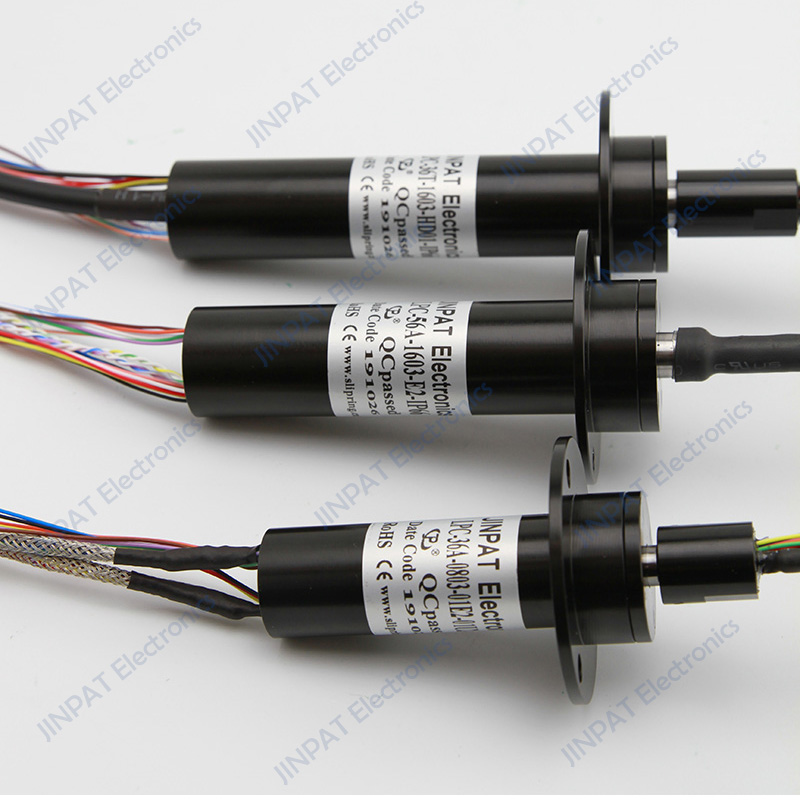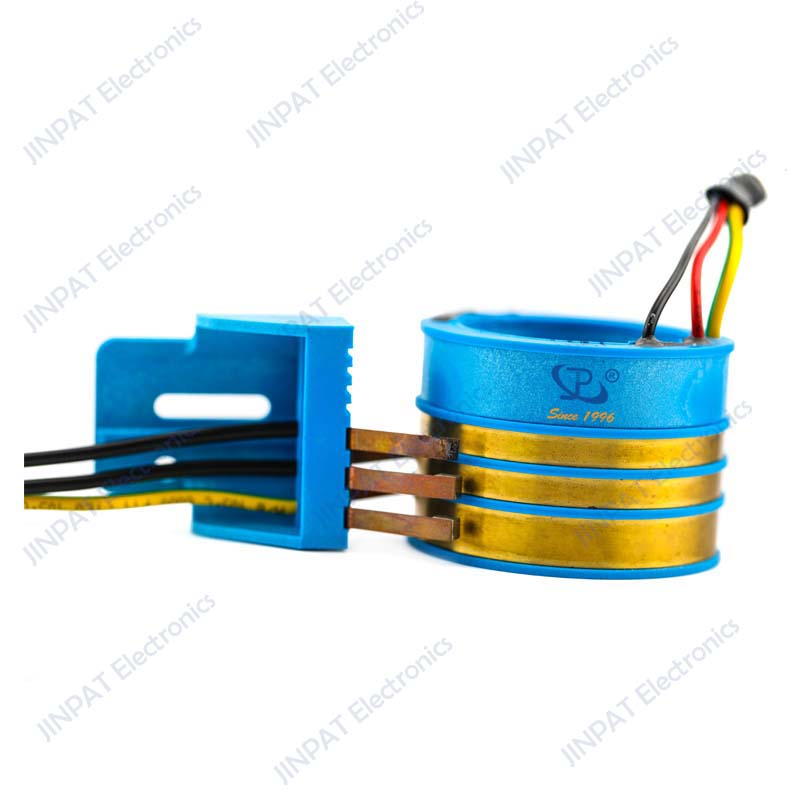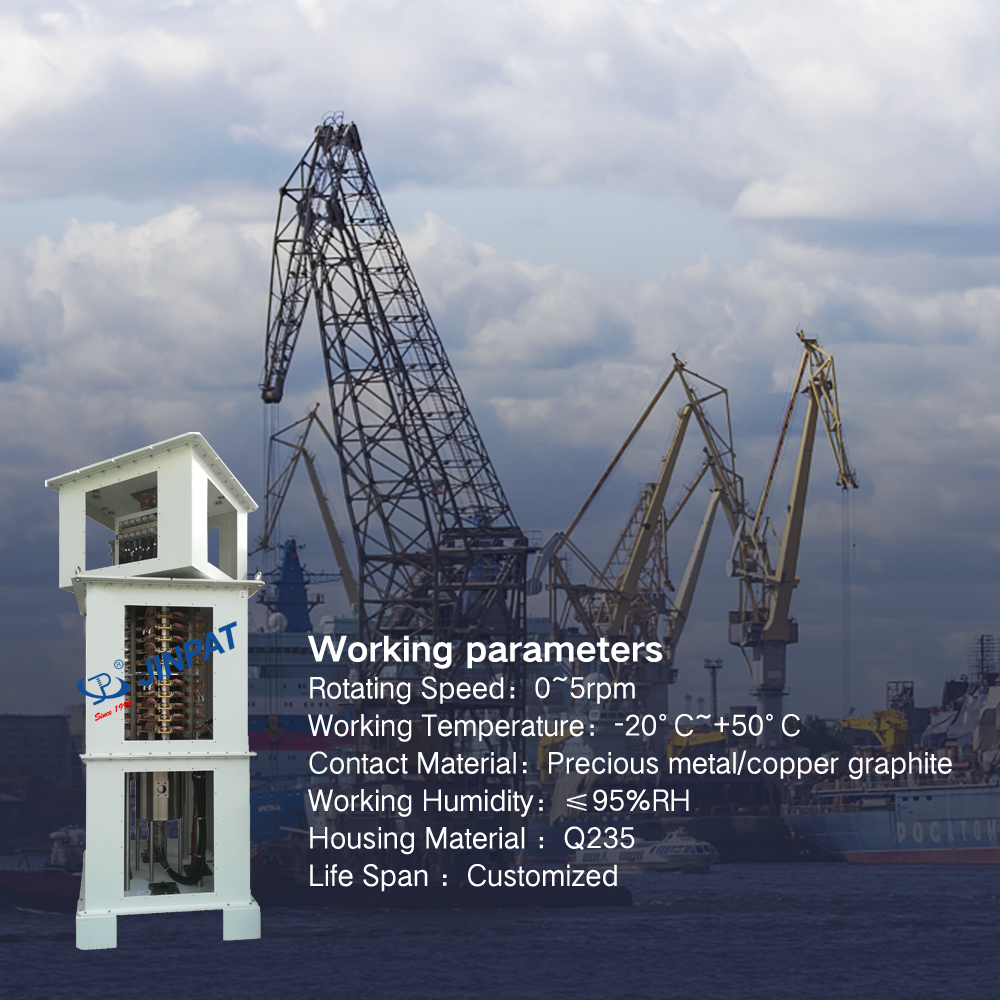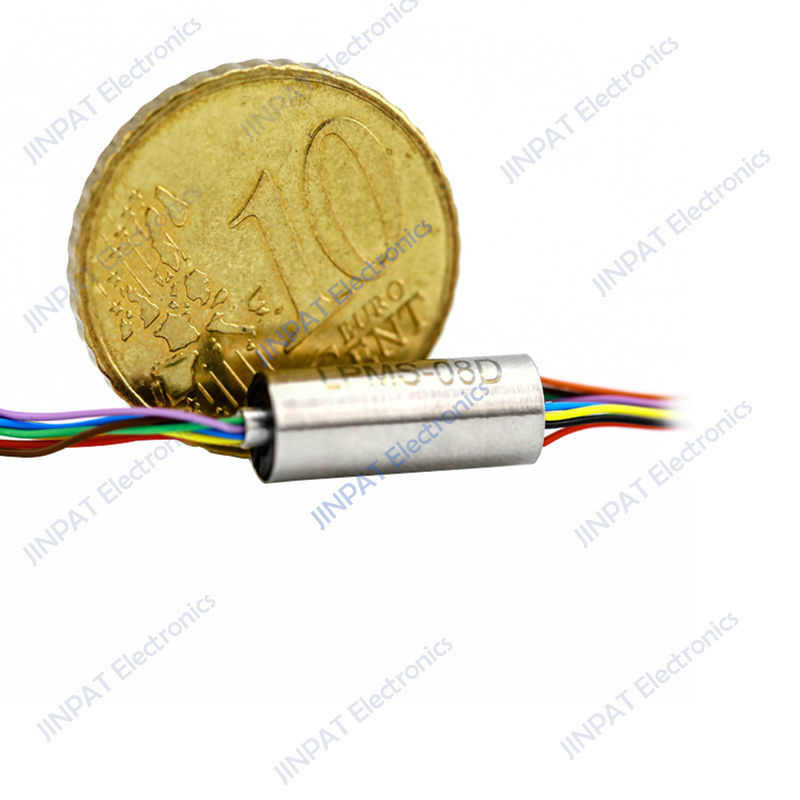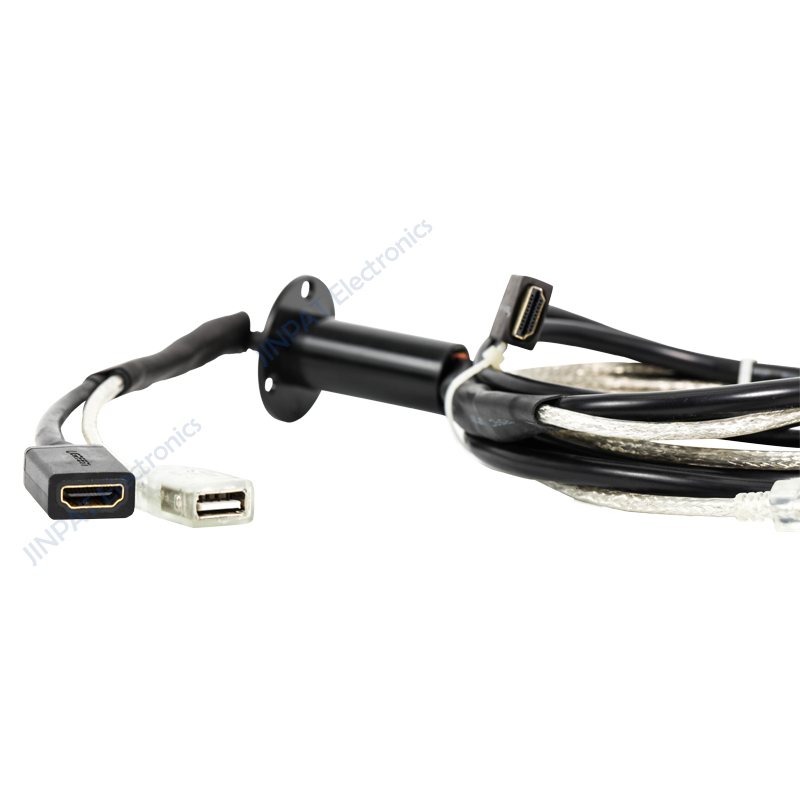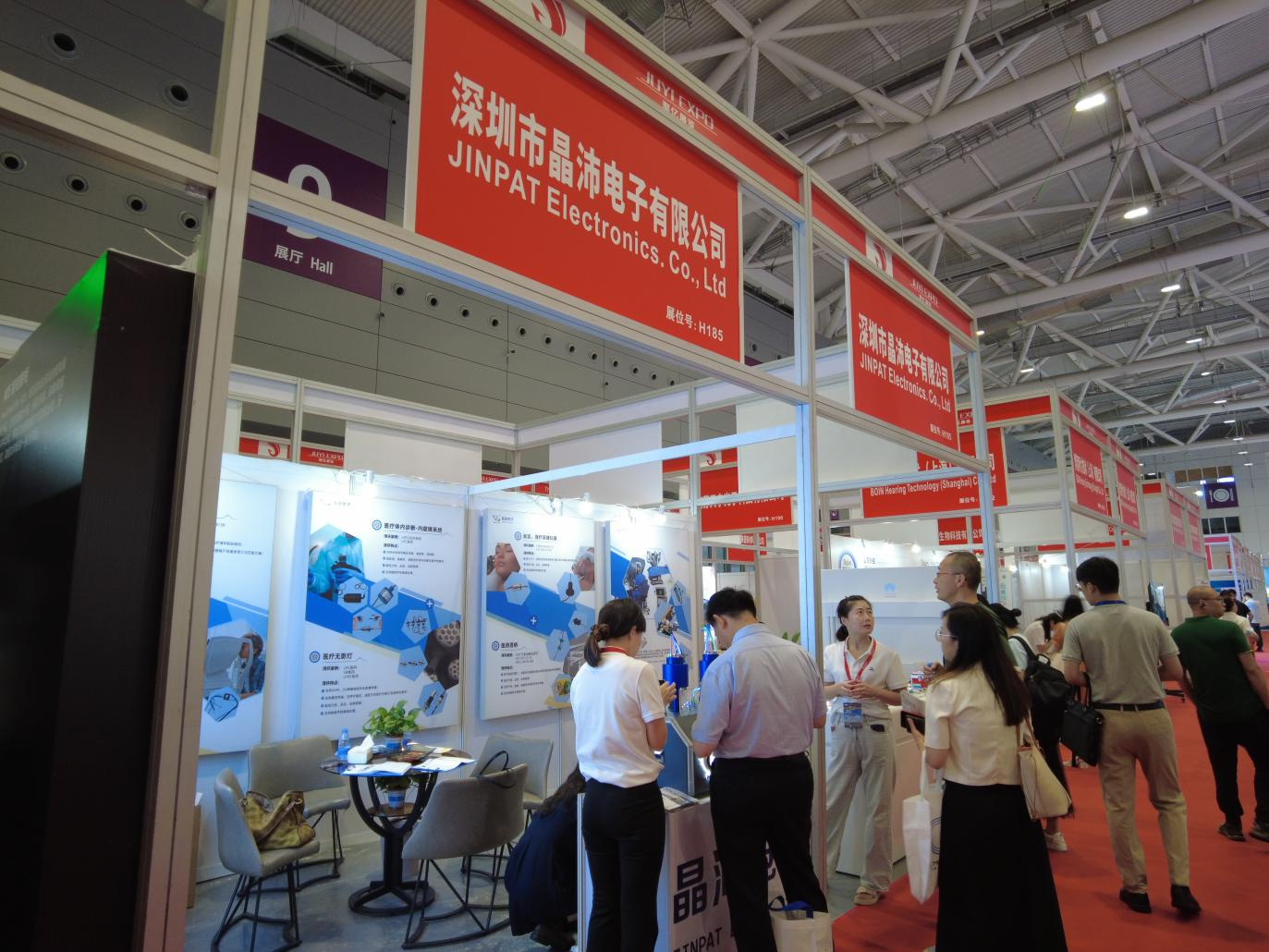A slip ring, also known as a rotary electrical connector or rotary joint, is a crucial component in packaging machinery used for transmitting power, signals, and data, making it essential for the smooth operation of packaging equipment. Recently, JINPAT has developed a groundbreaking slip ring that can replace KUEBLER’s products in the field of packaging machinery, offering the following features and functionalities:
One of the primary functions of slip rings in packaging machinery is power transmission. They allow the transfer of electrical power from the stationary parts to the rotating components such as turntables and reels, ensuring the continuous operation of these rotating parts without being limited by cables. This seamless power transmission is vital for the efficient functioning of packaging machinery. JINPAT latest product, the SR085-30-06-04-12302-V100, similar to the hollow shaft slip ring 030 series,offers modular combination of ring circuits, with users being able to choose from 1 to 10 channels. Additionally, this slip ring employs a screw-type wiring method, eliminating the need for external wires, thus significantly reducing space constraints.
Packaging machinery typically requires the transmission of various control signals and data to ensure precise operation and monitoring. Slip rings play a crucial role in this regard by ensuring seamless communication between the rotating and stationary parts, facilitating precise control of the machinery. It is imperative to select highly reliable slip rings to ensure stable operation even under high-speed, high-load, and continuous running conditions. JINPAT SR085-30-06-04-12302-V100 slip ring features an aluminum alloy sandblasted housing, offering excellent wear resistance, high-temperature tolerance, and a long lifespan, ensuring the stability of packaging machinery.
Slip rings are indispensable components in packaging machinery, ensuring the smooth operation of the machines. Therefore,the design and selection of slip rings must be tailored to specific application requirements to meet the unique demands of different packaging machinery.Different packaging machinery typically requires different characteristics,such as varying outer diameters, conductive materials, channel numbers, and rated currents. As a professional slip ring manufacturer, JINPAT actively collaborate with customers to design and produce slip rings according to their specific needs, ensuring the efficient operation of their machinery.
